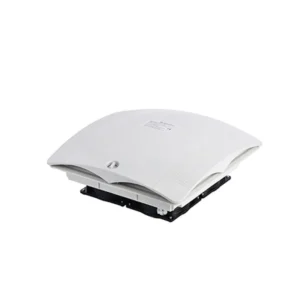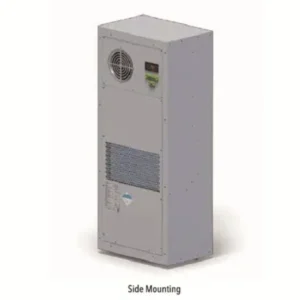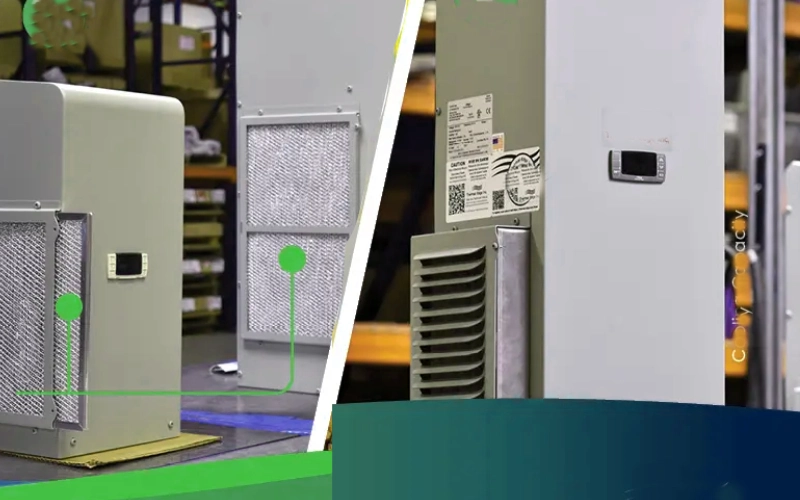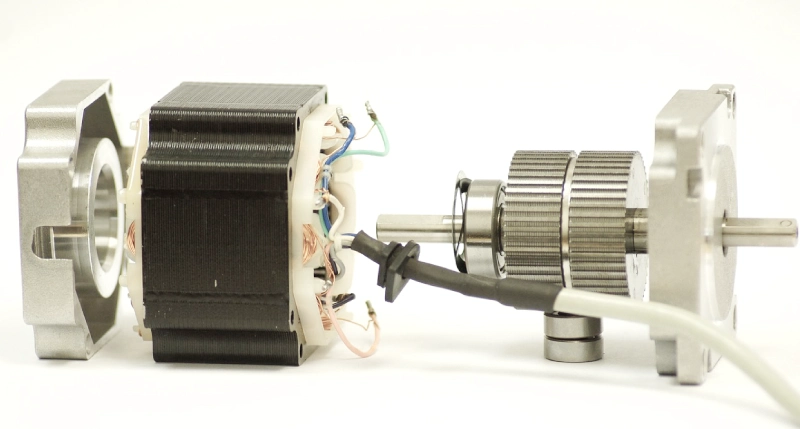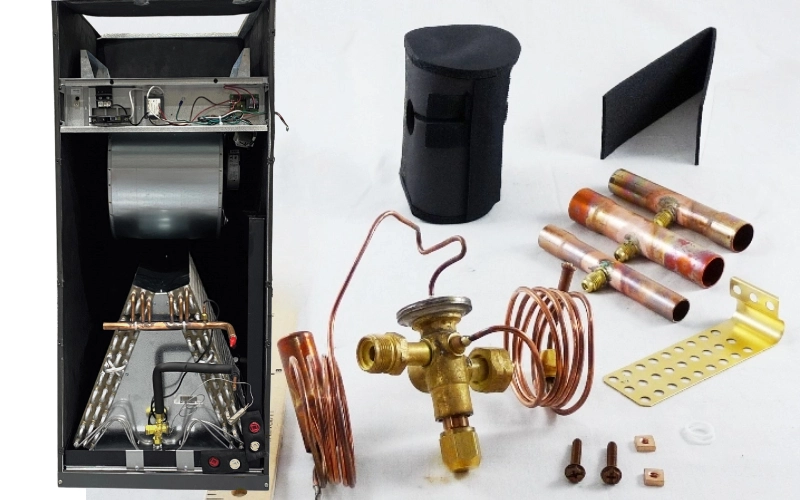A compact enclosure cooling unit for smaller cabinets is a small, self-contained system built to keep your cabinets at the right temperature. You need reliable cooling to protect sensitive electronics from overheating, condensation, and temperature swings. Specialized cooling units handle harsh environments and maintain temperature, keeping your equipment safe.
Key Takeaways
- Compact enclosure cooling units protect sensitive electronics from overheating, ensuring reliable performance and safety.
- Regular maintenance, like cleaning filters and checking seals, prevents breakdowns and extends the life of your cooling system.
- Choosing energy-efficient cooling units saves money on electricity bills and reduces your carbon footprint.
Why Cooling Matters in Small Cabinets
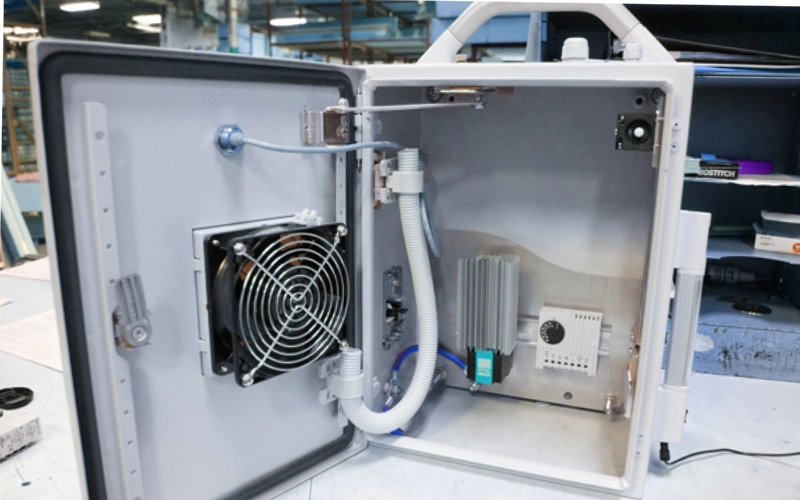
Risks of Overheating
You might think a small cabinet doesn’t need much attention, but heat can sneak up fast. When heat builds up inside, it can damage your electrical system and cause equipment failure. Hot wires and cords sometimes spark electrical fires. Poor insulation or damaged wires may lead to short circuits. If you skip inspections, you might miss hidden heat problems that put your safety and property at risk.
Loose connections and moisture are the biggest problems. Together, they cause almost half of the overheating cases. Dust and dirt can block airflow, trapping heat and making things worse.
Here’s what you need to watch out for:
- Overheating can ruin your entire system.
- Heat can start fires.
- Short circuits happen when wires get too hot.
- Missed inspections let heat problems grow.
Did you know that 1.4 million electrical panels were recalled because of overheating? In Canada, 289,000 panels had similar heat issues. Overheating is a top reason for equipment failure in compact enclosures. If you invest in proper cooling, you can minimize risks and extend the life of your control panels. Cooling also helps you avoid costly repairs and downtime.
- The cost of a climate control system is usually less than replacing damaged equipment.
- Cooling prevents heat and condensation from causing major failures.
- Good cooling keeps your components reliable and safe.
Common Applications
You’ll find compact enclosure cooling units in all kinds of places. Cooling is essential for industrial automation, food processing, chemical plants, petrochemical sites, wastewater treatment, and telecommunications. These industries rely on cooling to keep heat under control and maintain stable temperature.
| Industry | Application Description |
|---|---|
| Food and Beverage | Used in automated packaging machines to maintain stable temperatures for heat-sensitive components. |
| Oil and Gas | Protects control systems in offshore drilling operations from extreme heat. |
| Manufacturing | Keeps industrial machinery control panels cool to prevent downtime due to overheating. |
| Renewable Energy | Maintains efficiency in wind turbine control cabinets by preventing electrical failures due to heat. |
| Medical and Pharmaceutical | Ensures stable conditions for sensitive instruments in laboratory equipment enclosures. |
| Military and Defense | Used in radar and surveillance system enclosures to ensure stable operation in extreme environments. |
| Transportation and Automotive | Keeps railway signal control cabinets cool to prevent malfunctions in train control systems. |
Cooling units help you manage heat in these environments. You get better performance, fewer breakdowns, and safer operations. When you control temperature, you protect your investment and keep everything running smoothly.
Types of Compact Enclosure Cooling Units
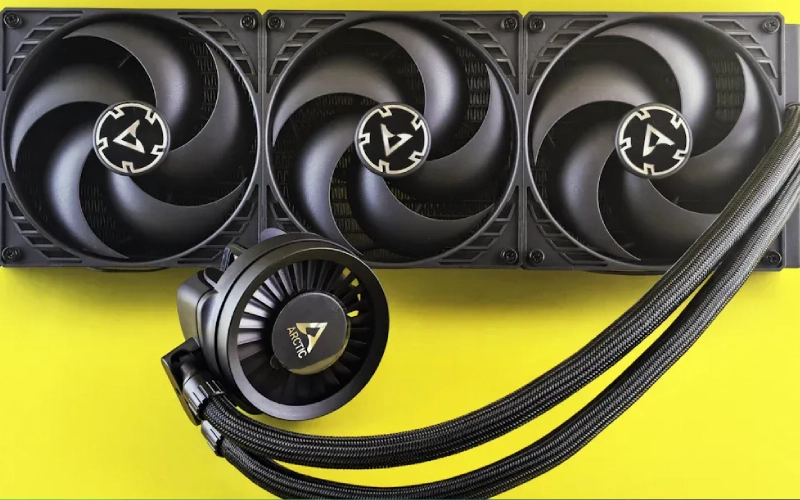
When you look for ways to manage heat inside smaller cabinets, you’ll find several enclosure cooling systems designed for different needs. Let’s break down the main types you’ll see, including Linkwell’s top solutions and other options you might consider.
Cabinet Air Conditioner (Linkwell)
Recommended products
If you need serious cooling power for your cabinet, a cabinet air conditioner is your go-to choice. These units use a closed-loop system to keep heat out and maintain a stable temperature inside. You get reliable performance even in dusty, humid, or outdoor environments.
Here’s how a cabinet air conditioner works:
| Key Component | Function |
|---|---|
| Compressor | Pressurizes refrigerant, turning it into a high-temperature gas to release heat efficiently. |
| Evaporator Coil | Absorbs heat from inside the enclosure, cooling the air. |
| Condenser Coil | Releases absorbed heat outside the enclosure. |
| Fans | Move air across the coils to boost heat transfer. |
| Filters | Trap dust and debris, keeping airflow clean. |
| Closed-Loop Cooling | Keeps internal air separate from outside air, preventing contamination. |
| Heat Exchange Process | Transfers heat from the enclosure to the outside using conduction, convection, or radiation. |
Linkwell’s cabinet air conditioners stand out because they offer smart digital controls, inverter technology, and IP54/IP65 protection. You can install them on the side, top, or door of your cabinet. These units meet UL, CE, RoHS, and ISO 9001 standards, so you know you’re getting safe and reliable cooling.
Tip: Cabinet air conditioners work best when you need to keep heat out in tough environments. They’re perfect for outdoor cabinets or places with lots of dust and moisture.
You might wonder about energy use. Cabinet air conditioners use compressors and refrigerants, so they consume more energy than fans. In extreme conditions, though, they’re worth it because they keep heat under control and protect your equipment.
Electrical Enclosure Fan (Linkwell)
Sometimes, you just need to move air and get rid of heat fast. Electrical enclosure fans do exactly that. These fans circulate air inside your cabinet, pushing out hot air and pulling in cooler air. You get simple, effective cooling without the complexity of refrigeration.
Here’s what these fans do for you:
- Dust and particle filtration keeps sensitive components safe.
- Air circulation helps dissipate heat and maintain even temperatures.
- Cooling draws in cooler air, especially when the outside temperature is lower than inside.
- Protection from moisture and contaminants prevents corrosion and damage.
Linkwell’s enclosure fans are built for reliability. They use weatherproof housings and high-quality bearings. You can connect them to thermostats for automated cooling. These fans are energy-efficient, cutting power use by up to 30%. They’re easy to install and maintain, making them a smart choice for most enclosure cooling systems.
Let’s compare cabinet fans to other cooling methods:
| Aspect | Cabinet Fans | Traditional Cooling Devices |
|---|---|---|
| Power Consumption | Up to 70% reduction | Higher power usage |
| Airflow Control | Precise management | Less precise control |
| Environmental Impact | Lower carbon footprint | Higher environmental footprint |
| Application Suitability | Ideal for smaller spaces | Better for high-heat environments |
| Operational Costs | Lower due to energy savings | Higher due to energy consumption |
You’ll notice that fans work best in mild climates or when you don’t need heavy-duty cooling. They’re great for keeping heat in check without driving up your energy bill.
| Factor | Cabinet Fan | Outdoor Cabinet Air Conditioner |
|---|---|---|
| Installation Ease | Simple, low cost | Complex, high cost |
| Energy Efficiency | High, up to 80% savings | Lower, higher operational costs |
| Maintenance | Minimal, easy | Frequent, more involved |
Electrical Enclosure Ventilation (Linkwell)
Ventilation systems help you manage heat and moisture inside your cabinet. You can choose passive vents, active fans, or breather vents depending on your needs. Linkwell offers a range of ventilation solutions, including fan kits, air vents, and heat exchangers.
Here’s a quick look at the options:
| Ventilation Method | Advantages | Limitations |
|---|---|---|
| Passive Vents | Simple, cost- and energy-efficient, minimal maintenance | Less effective in high-heat or fluctuating temperatures |
| Active Fans | Reliable, precise cooling in tough environments | Can be noisy; not ideal for remote locations |
| Breather Vents | Maintains NEMA/IP ratings, protects from condensation | Doesn’t offer active cooling |
| Heat Exchangers | Great for sealed boxes, no air exchange needed | More costly and complex than vents or fans |
Linkwell’s ventilation systems combine fans and filters for maximum heat control. You get easy installation and long-term reliability. These systems help you keep heat and moisture out, which means fewer breakdowns and longer equipment life.
Note: Ventilation is a key part of enclosure cooling systems. It works best when you need to balance heat and humidity without using a lot of energy.
Other Enclosure Cooling Systems
You might see other enclosure cooling systems in the industry. Thermoelectric coolers and heat exchangers are popular alternatives. Each method has its own strengths.
- Thermoelectric coolers use solid-state technology for precise cooling. They can keep temperatures stable within ±0.01°C, which is important for telecom and photonics applications.
- Heat exchangers transfer heat without mixing internal and external air. They work well for sealed enclosures and offer very low maintenance.
Here’s how these alternatives stack up:
| Cooling Method | Reliability (MTBF) | Maintenance | Ability to Cool Below Ambient | Temperature Control | Environmentally Friendly | Initial Cost | Operating & Maintenance Cost |
|---|---|---|---|---|---|---|---|
| Thermoelectric Air Conditioners | >150,000 Hours | Virtually None | Yes | Precise < +/- 0.5 °C | Yes | Moderate | Low |
| Compressor-Based Air Conditioners | <100,000 Hours | Requires Maintenance | Yes | Less precise > +/- 1.0 °C | No | Moderate | Moderate |
| Air-to-Air Heat Exchangers | >300,000 Hours | Virtually None | No | Limits temperature rise | Yes | Low | Very Low |
Thermoelectric coolers last a long time and need little maintenance. Heat exchangers are even more reliable, with minimal upkeep. You’ll find these systems in places where you need tight temperature control or where maintenance is tough.
Why Choose Linkwell for Your Enclosure Cooling Systems?
When you pick a cooling solution, you want safety, reliability, and efficiency. Linkwell’s enclosure cooling systems meet top industry certifications:
| Certification Type | Description |
|---|---|
| UL | Tested for safety in the U.S. under standards like UL 508A. |
| cUL | Meets Canadian safety standards. |
| NEMA | Classifies enclosures for protection against environmental elements. |
| IP Ratings | Shows protection against dust and moisture, like IP66 for tough conditions. |
| ATEX | Ensures safety in explosive atmospheres. |
You get peace of mind knowing your cooling units meet strict standards. Linkwell’s products deliver energy efficiency, reliable heat management, and easy installation. You can trust them to keep your cabinets cool and your equipment safe.
Remember: The right enclosure cooling systems protect your investment, cut down on heat-related failures, and keep your operations running smoothly.
Choosing a Compact Enclosure Cooling Unit for Smaller Cabinets
Selection Criteria
Picking the right cooling unit for your small cabinet can feel tricky, but you can break it down into a few simple steps. You want a solution that matches your needs and keeps your equipment safe from heat. Here’s what you should look for:
- Cooling Capacity: Make sure the unit can handle the amount of heat your equipment produces. If you pick a unit that’s too small, it won’t keep the temperature steady.
- Energy Efficiency: Look for models with high EER or SEER ratings. These units use less power and save you money over time.
- Form Factor and Size: Check the space inside your cabinet. Choose a compact option that fits without crowding your equipment.
- Noise Levels: If your cabinet sits in a quiet area, pick a unit that runs quietly.
- Reliability and Durability: You want a cooling system that stands up to daily use and tough conditions.
- Ease of Maintenance: Go for units that let you clean filters and parts without much hassle.
- Temperature Range and Control: Make sure the unit can keep the temperature where you need it.
- Ventilation and Airflow: Good airflow stops hot spots from forming and keeps heat moving out.
You also need to figure out the heat load. Start by measuring your cabinet’s size and checking the current temperature inside and outside. Use this formula to convert watts loss to Btu/hr:Watts X 3.41 = Btu/hr
Multiply the cabinet’s square footage by the right temperature conversion multiplier. This gives you the total heat load in Btu/hr. Once you know the heat load, you can pick the best cooling system for your setup.
Environmental factors matter, too. Ask yourself these questions:
- What’s the highest temperature in your area?
- Is the location dusty or dirty?
- Are there corrosive vapors or chemicals nearby?
- Will water splash or spray on the cabinet?
- Is humidity high enough to cause condensation?
If you answer yes to any of these, you need a cooling unit built for tough environments. Linkwell’s cabinet air conditioners and enclosure fans come with IP54/IP65 ratings, so they handle dust, moisture, and heat with ease.
Tip: Always size your cooling unit early in the design process. This helps you avoid problems with heat and keeps your equipment running smoothly.
Installation and Maintenance
You want your cooling system to work right from day one. Proper installation makes a big difference. Here’s a quick guide to help you get started:
| Cooling Unit Type | Key Features and Installation Notes |
|---|---|
| Closed-loop Design | Keeps dust and contaminants out; works well for mild-to-moderate heat; no water or refrigerant needed. |
| Air-to-Water Heat Exchangers | Great for hot spots; needs plumbing and regular checks; best for places with chilled water. |
| Thermoelectric Coolers (TECs) | Small and quiet; no moving parts; perfect for precise temperature control. |
| Vortex Coolers | Uses compressed air; fits hazardous areas; needs a steady air supply. |
| Top-Mounted Air Conditioners | Sits on top; saves wall space; strong cooling in a small footprint. |
| Narrow Enclosure Air Conditioners | Slim design; fits tight spaces; advanced controls like digital thermostats. |
When you install a Linkwell cooling unit, follow the instructions closely. Make sure the mounting is secure and the airflow isn’t blocked. If you use a fan, connect it to a thermostat for automatic cooling.
Maintenance keeps your system working its best. Here’s what you should do:
- Clean or replace air filters often, especially if your cabinet sits in a dusty spot.
- Wipe down electrical parts and condenser coils to keep airflow strong.
- Swap out worn parts before they fail.
- Check and clean the condensate system to avoid water buildup.
- Keep the cabinet clean to stop dust from clogging the cooling system.
Regular maintenance helps you avoid breakdowns and keeps heat from damaging your equipment. If you stick to a schedule, your cooling unit will last longer and work better.
Note: Most problems come from poor sizing, ignoring the environment, or skipping filter maintenance. Stay ahead by checking these areas first.
Energy Efficiency
Energy efficiency isn’t just about saving money. It also helps you protect your equipment and the environment. Linkwell’s compact enclosure cooling units use advanced technology to cut down on energy waste. Their cabinet air conditioners feature inverter compressors and EC fans. These parts adjust to real-time cooling needs, so you only use as much power as you need.
When you choose an energy-efficient cooling unit, you get several benefits:
- Lower electricity bills because the unit uses less power.
- High EER ratings mean better cooling with less energy.
- Smart controls and variable speed compressors adjust cooling based on heat levels, so you don’t waste energy.
- You reduce your carbon footprint while keeping your equipment safe.
Linkwell’s cooling systems stand out for their energy savings. You get reliable cooling, lower costs, and strong protection against heat. If you want a compact option that delivers top performance, Linkwell has you covered.
Choosing the right compact enclosure cooling unit keeps your equipment safe and boosts performance. You get energy efficiency, easy installation, and the right size for your space. Linkwell’s solutions deliver strong performance and reliability. For top performance, clean filters, check seals, and use high-quality enclosures every time.
FAQ
How do you know which cooling unit fits your cabinet?
Measure your cabinet size and heat load. Check the product specs. If you need help, ask Linkwell’s support team for advice.
Can you install these cooling units by yourself?
You can install most units with basic tools. Always follow the instructions. If you feel unsure, call a professional for help.
How often should you clean or replace filters?
| Environment | Filter Maintenance |
|---|---|
| Dusty/Dirty Area | Every 1–2 months |
| Clean Area | Every 3–6 months |

